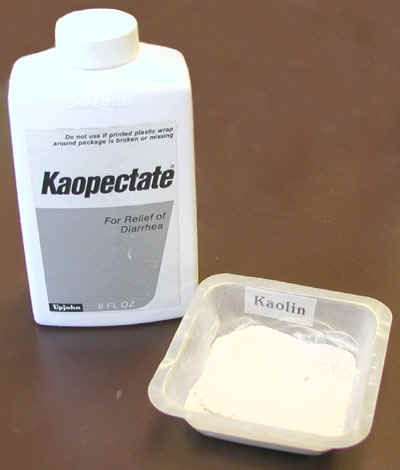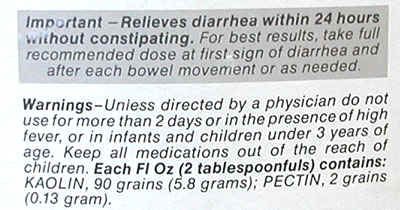Antidiarrhea Medications

Kaolin is a white clay (found primarily in Georgia and Alabama) that contains elevated levels of the uranium and thorium decay series. This clay is believed to be derived from the weathering of granites which are known to contain elevated levels of these radionuclides.
Until the late 1980s, kaolin was the primary ingredient in the antidiarrhea medication Kaopectate (hence the latter's name). Alas, Kaopectate no longer contains kaolin. Many years ago there was a television commercial in which a Mexican family had a rough time during their vacation to the U.S., and Kaopectate came to the rescue. As I recall, it was announced in that commercial that Kaopectate was new and improved. The kaolin was taken out of Kaopectate. Not to worry, generic brands are still being sold that use kaolin. Just check the list of ingredients.
Many years ago, my boss at that time was asked by the state of Georgia to calculate the radiation dose from consuming the kaolin in this type of product. When we analyzed a sample, we found that the members of the uranium and thorium decay series were present in concentrations of 0.25-0.35 and 0.27-0.5 picocuries per gram of medication. This indicated that it would be necessary to consume over 1000 pounds a year to exceed the annual limit of intake (ALI) established by the International Commission on Radiological Protection (ICRP). If you are using that much antidiarrhea medication, you have more important things to worry about than exceeding the ICRP's ALI.

This label is from a 1980s bottle of Kaopectate.
Donated by David Simpson.
